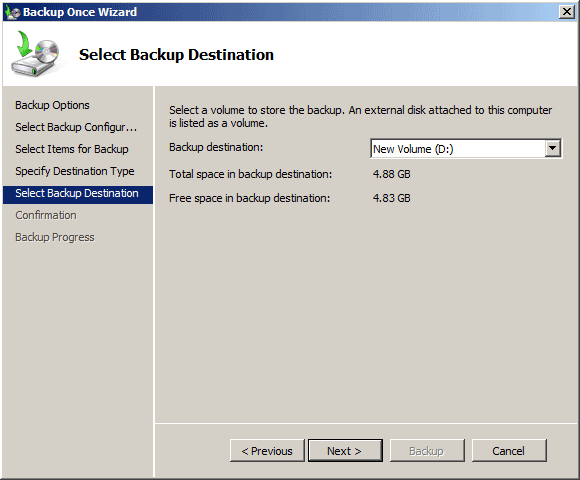

Back up virtual machines 'as is' if failed. Click on the setting to change it, if necessary. You can configure the application processing settings on the Select Virtual Machines step of the VMware backup wizard.īy default, the Try application processing setting is set.

To learn more about CBT, refer to Change Block Tracking on Virtual Machines article at. Once you selected backup storage, click Next.Ĭhanged Block Tracking is an incremental backup technology for VMware virtual machines. If no storage is available, click Add new Storage Account. Select a storage account for the backup plan from the list of available backup storage. To create a new VMware backup plan, click the VMware icon in the horizontal menu bar Refer to the MSP360 website to learn more If you're running Windows Server 2008 Service Pack 2 (SP2) or Windows 7/Windows Server 2008 R2, please check our TLS Operating Systems Instructions for steps to take.Note that to perform VMware backups and restore VMware backups, you have to purchase a special license. If you have Windows XP/Vista or Windows Server 2003/2008 (not R2) machines in your environment running our backup agent, we recommend performing migration to newer operating systems that are supported by Microsoft, such as Windows 10/11 and Windows Server 2016 or higher.

We recommend that all customers remove TLS 1.0 and 1.1 dependencies in their technology environments and disable TLS 1.0 and 1.1 at the operating system level wherever possible. What to do if you’re still using TLS 1.0 and 1.1 However, because of evolving regulatory requirements and new security vulnerabilities in TLS 1.0 and 1.1, MSP360 will be deprecating support for transport layer security 1.0 and 1.1 on July 1st, 2022. We have supported these older TLS protocols for more than 10 years in order to serve our customers using older Windows operating systems as best as possible. MSP360 has always practiced a security-first approach to developing solutions for MSPs and IT teams worldwide. The continued support of TLS 1.0 and TLS 1.1 poses a significant security risk for our customers. Why is MSP360 deprecating TLS 1.0 and 1.1?
#CLOUDBERRY BACKUP FOR WINDOWS SERVER 2008 WINDOWS 8#
Note: if you are using Windows 8 or Windows 2012 and higher, this will not affect you. Only very old browsers and older operating systems like Windows XP, Windows Vista and Windows Server 2008 still use TLS 1.0 or TLS 1.1, which are no longer considered to be secure. Most modern operating systems and browsers use TLS 1.2 by default, because it provides the highest level of encryption and security. However, it was soon superseded by TLS 1.2, which was released two years later in 2008. TLS 1.1 was released in 2006, in order to protect against vulnerabilities seen in version 1.0. TLS 1.0 does not keep a connection sufficiently secure. For several years now, it has been known to be vulnerable to attacks in addition to using weak cryptographic algorithms. TLS 1.0 was released in 1999, making it a nearly 20-year-old security protocol. Currently, MSP360 supports TLS 1.2, which is far more secure than TLS 1.0 and 1.1. Transport Layer Security, more commonly known as TLS, is a security protocol for establishing encryption channels in order to provide secure communications over computer networks.


 0 kommentar(er)
0 kommentar(er)
